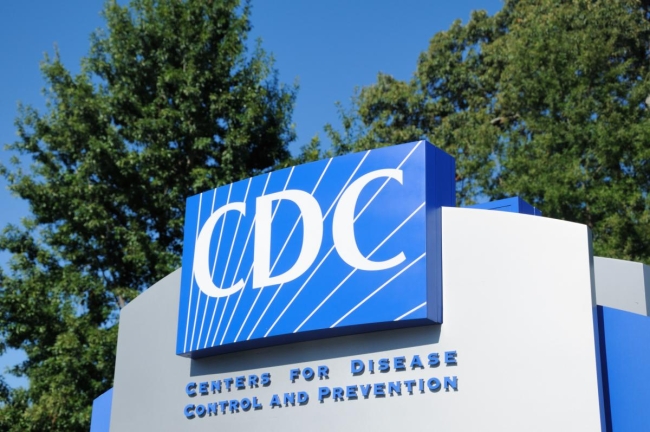You have /5 articles left.
Sign up for a free account or log in.

ISTOCK.COM/sshepard
The Centers for Disease Control and Prevention updated its COVID-19 testing guidance for colleges Wednesday.
The new guidance includes fresh detailed information on how to prioritize testing for students, faculty members and staff members in the event of an outbreak. But it disappointed some experts who think the CDC's guidance on testing asymptomatic individuals for disease monitoring and surveillance purposes falls short of what's needed.
While a previous version of the guidance recommended against testing all students, faculty and staff upon their return to campus -- so-called entry testing -- the updated version states that “a strategy of entry screening combined with regular serial testing might prevent or reduce SARS-CoV-2 transmission.”
The guidance stops short, however, of recommending entry testing combined with regular serial testing as a strategy, recommending instead that colleges consult with local public health officials to determine optimal testing strategies in light of their individual contexts.
Some experts had criticized the CDC’s prior testing guidance, which focused primarily on testing symptomatic individuals and close contacts of people with known infections. They said the previous guidance gave colleges an excuse to be lax in their testing regimens. An August study led by researchers at the California Institute of Technology and published as a preprint found that 27 percent of colleges planned on testing undergraduates upon their return to campus, while 20 percent planned “to test their communities regularly to some extent.”
The new guidance lays out five different strategies for testing asymptomatic individuals with no known exposure to COVID -- ranging from universal, one-time entry screening to repeat or random testing to no screening testing at all -- and relevant considerations for each of these strategies.
“While the new guidance is less harmful than the June guidance, CDC is still wrong, in my view, in not actually making a recommendation in support of entry testing followed by high-frequency surveillance testing of all students,” said Gavin Yamey, a professor of global health and public policy at Duke University.
"In the new guidance, CDC simply notes that a variety of approaches are being used and it gives these equal weight, which is wrong," Yamey said. "But here’s the kicker. Alongside this list of options, there is a footnote from CDC that says, 'This is an emerging area, and there is currently limited scientific evidence to guide decisions to use or not use one of these strategies, but public health research is currently being conducted to examine the effectiveness of these strategies in the IHE setting.' This footnote is inaccurate. Modeling evidence, for example by David Paltiel and colleagues, has shown that, assuming typical student behavior, testing all students two to three times per week is the optimal strategy for averting outbreaks."
Paltiel, the Yale University public health professor who led that modeling study, was likewise unimpressed by the guidance as it relates to screening asymptomatic individuals with no known exposure to COVID-19.
"They’re suggesting that there’s limited evidence to support a choice between doing nothing at all and testing with some regularity. That's just disingenuous and dangerous," he said.
"You could split hairs and say it’s true and say there is no direct empirical evidence of the efficacy of high-frequency testing for SARS-CoV-2 on university campuses in the midst of a COVID pandemic," Paltiel continued. "But there's plenty of evidence that young, asymptomatic and presymptomatic individuals are fueling this pandemic, and it doesn’t take a huge inferential leap from there to see that that is evidence for frequent asymptomatic screening for control on campuses."
The CDC issued an article earlier this week finding that the number of young adults aged 18 to 22 with COVID-19 rose by 55 percent from early August to early September as many colleges began bringing students back for the fall. The number of cases increased at a faster rate than did the rate of testing, meaning the increase likely was not solely attributable to an increase in testing.
The new CDC guidance document offers a five-part hierarchy for selecting individuals for testing, with individuals who have COVID-19 symptoms and those who have had close contact with infected individuals getting top priority.
The guidance also includes much more advice than has been available to date on testing during an outbreak situation. It outlines a three-tiered approach for how faculty, students and staff should be prioritized for testing in the event of an outbreak, depending on their level of exposure to an individual with COVID-19.
For example, the guidance says that students, faculty and staff who shared a classroom with an infected individual in which they were not spaced six feet apart beginning two days before the onset of symptoms or, in the case of asymptomatic testing, the collection of a test specimen would be among those most highly prioritized for testing (tier one). Those who shared a classroom where at least six feet of distance was maintained between individuals at all times would be lower priority for testing (tier two).
Other individuals identified as being at the highest priority, tier one, for testing in the event of an outbreak include the following:
- Students sharing a room or bathroom in a residence hall, living in fraternity/sorority house, or living together in off-campus housing with an individual who is COVID-19 positive
- Students, faculty and staff who have used the same dining hall at roughly the same time(s) as an individual with COVID-19
- Students, faculty and staff who are on/involved with the same athletic team as an individual with COVID-19
- Students, faculty and staff who have attended campus events or unsanctioned social gatherings (such as off-campus parties) where social distancing was not strictly adhered to with one or more individuals with COVID-19
- Students, faculty and staff identified as a close contact through case investigation and contact tracing.
The new guidance also refers to a recent CDC guidance document for K-12 schools that identifies specific metrics for local community case numbers and positive test rates that can be used to inform administrators about the risks of offering in-person learning. The CDC says that these indicators, designed for K-12 schools, “might have relevance for IHEs that draw the majority of their students from the immediate local community and with limited or no on-campus residential facilities for students. For IHEs with residential facilities and that draw students from a much larger and diverse geographic region and from communities with different levels of current SARS-CoV-2 transmission, these indicators might have less direct applicability.”
The CDC guidance emphasizes the importance of combining testing with strong contact tracing and quarantining measures as well as measures to mitigate disease spread, including social distancing, mask usage, hand hygiene and enhanced cleaning and disinfection practices.
"This is a long-awaited first step that will need constant updates based on emerging analysis of data and best practices," said Howard K. Koh, the Harvey V. Fineberg Professor of the Practice of Public Health Leadership at Harvard University and a former assistant secretary for health for the U.S. Department of Health and Human Services.
"Now we need data," Koh said. "My major expectation now is that state by state and community by community, there has to be some integration of all the testing data that comes out from these universities to look at effectiveness, cost-effectiveness and many other indicators."
A wide array of testing strategies is being employed right now, he added.
"We have to get a better understanding of which ones are feasible and effective and ultimately recommended," Koh said.








